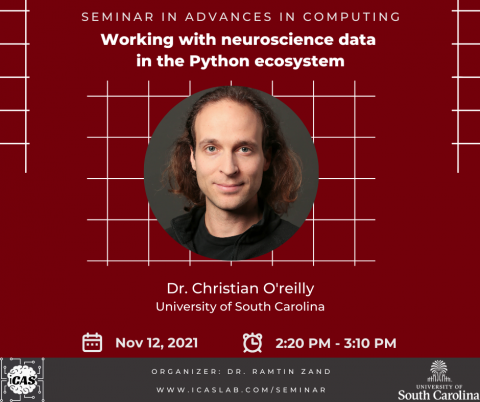- 72 views
Meeting Location:
Storey Innovation Center 1400
Live Meeting Link for the virtual audience
Talk Abstract: About 15 years ago, as I was working on a graphical interface for scientific software in Matlab, I got frustrated by the clumsy code structure that Matlab required for GUI coding. Although I thought that the C++ Qt library would be a great alternative, I did not want to get my fast-prototyping process slowed by low-level coding. Since Python had bindings for Qt, I decided to translate all my code into Python. To my surprise, I was able to swiftly complete this process over the weekend. Since then, I have been working almost exclusively in Python, and I never regretted it a single day. In this talk, I will the main components of the Python stack for scientific programming, focusing on neuroscience and illustrating it by summarily analyzing EEG recordings (MNE-Python). I will discuss why Python has become a major player in this field and how limitations typical to interpreted languages (e.g., slow at runtime) have been tackled with libraries such as NumPy. I will also explain why Python is a strong environment for data wrangling by introducing libraries like Pandas – which offers data frame functionalities similar to R – and XArray. Finally, I will touch upon how libraries like Seaborn provide a high-level interface for quickly producing publication-quality figures with only a few (if not a single) lines of code.
Speaker's Bio: Christian O’Reilly received his B.Ing (elec eng; 2007), his M.Sc.A. (biomed eng; 2011), and his Ph.D. (biomed eng; 2012) from Polytechnique Montreal. He was a postdoc fellow at the CARSM (2012-2014) and then a NSERC postdoc fellow at McGill's Brain Imaging Center (2014-2015) where he worked on EEG sleep transients. He also worked at the EPFL (2015-2018) on modeling of the thalamocortical loop and at McGIll on brain connectivity (2020-2021). Since 2021, he is Assistant Professor at UofSC.
